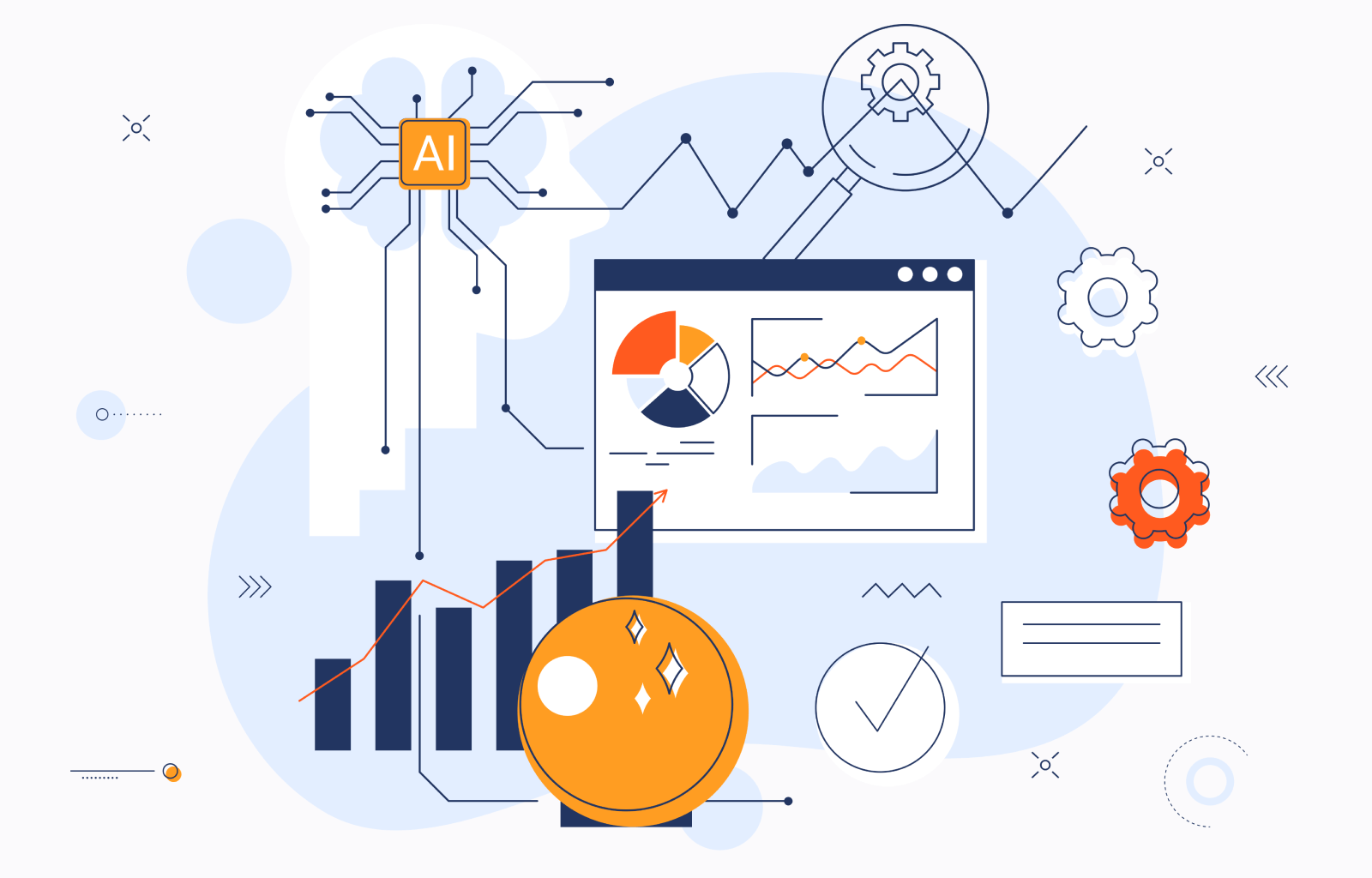How Custom Predictive Analytics Tools Are Solving Real Problems Across Industries

Companies across industries are under constant pressure to make faster decisions, cut waste, and predict what’s coming next. However, even the most forward-thinking teams still struggle with turning data into actionable insights. One reason? Most analytics tools aren’t built for the real world they operate in.
That’s where custom predictive analytics comes in. When built around the actual structure, data, and daily decisions of a business, these tools can surface insights that generic dashboards miss.
In this article, we’ll take a closer look at why off-the-shelf predictive tools often fall short, how custom-built systems are solving industry problems in practical ways, and what to consider when creating your predictive engine.
Why Off-The-Shelf Predictive Tools Often Don’t Deliver
Many companies exploring predictive analytics tools start with ready-made solutions. But once you start using them in day-to-day operations, their limitations become clear:
- Poor integration with internal systems. CRMs, ERPs, and other proprietary tools hold the bulk of a company’s most valuable data. Many out-of-the-box predictive platforms lack integration with these systems.
- Inflexible data structures. Pre-built analytics platforms tend to assume that everyone works the same way — same process, same KPIs. Yet, in reality, industry-specific data tools must reflect the unique logic of how a business runs.
- Retailers categorize products differently from how manufacturers categorize parts. A healthcare provider’s workflows aren’t the same as a logistics operator’s. When predictive modeling is forced into a one-size-fits-all mold, accuracy and usability both suffer.
- Black-box logic creates low trust. Many generic platforms rely on proprietary machine learning for forecasting, but don’t explain how predictions are made. For teams on the ground, this makes the system feel like a black box: they see numbers, but have no idea of how they were calculated or what influenced them.
More organizations are turning to custom predictive analytics tools. When designed properly, tailored systems not only plug into existing data ecosystems but also unlock real-time data insights and drive operational efficiency through analytics.
What Custom Predictive Tools Can Do
Unlike off-the-shelf platforms, custom predictive analytics tools are built around the reality of your business. Here’s what that looks like in practice.
Connect to your existing data and workflows
Custom solutions plug into the tools your team already uses. Instead of forcing your team to adapt to a new interface or reformat your data, tailored analytics solutions meet you where you are.
Generate predictions that lead to decisions
Generic dashboards often stop at “interesting,” while custom tools aim for “actionable.” The most effective predictive analytics tools are built not just to forecast outcomes, but to support decision-making in the context of your business logic.
For example, instead of saying, “Demand for this product might go up,” a good tool will say, “Based on this forecast, increase production by 15% next month to avoid stockouts.” That’s the real power of business intelligence — not more data, but clearer direction.
Adapt over time as your business evolves
The best custom systems are built with flexibility in mind. They can be updated to reflect new KPIs, additional data sources, or process changes without starting from scratch.
This is where AI in business analytics shines. When combined with machine learning for forecasting, these systems can improve their accuracy as new data comes in, making your predictions not just relevant, but continuously smarter.
In short, custom predictive analytics tools aren’t just about smarter tech — they’re about solving industry problems in ways that work for the people using them. And when designed well, they become invisible infrastructure.
Predictive Use Cases Across Different Industries
Custom predictive analytics tools aren’t limited to one sector — they’re reshaping how entire industries operate. From managing stock to anticipating patient needs, here’s how different fields are applying data-driven solutions to solve high-impact problems.
- Manufacturing. Predictive modeling helps manufacturers forecast equipment failure before it happens, reducing downtime and unplanned maintenance. By analyzing sensor data and production logs in real-time, teams can schedule repairs proactively and keep operations running smoothly.
- Retail & eCommerce. For retailers, predictive analytics tools optimize inventory and personalize offers. Instead of reacting to sales trends after the fact, businesses can forecast demand at the SKU level, segment customers by buying behavior, and send targeted promotions — all based on real-time data insights.
- Logistics & Supply Chain. In logistics, tailored analytics solutions help optimize delivery routes, predict shipment delays, and adjust warehouse loads dynamically. With industry-specific data tools tracking traffic, weather, and partner performance, companies can make smarter decisions to reduce costs and improve on-time rates.
- Healthcare. Hospitals and clinics use AI in business analytics to predict patient admission rates, identify those at risk of readmission, and streamline resource planning. Custom models trained on local data can outperform generic ones by factoring in regional demographics, treatment protocols, and patient histories.
When It’s Time To Invest In A Custom Predictive Analytics Tool
How can one know that they need a custom tool? Here are some real-world signs that you’ve outgrown your current setup.
There’s no predictive tool in place
If your team is still relying on spreadsheets, gut instinct, or weekly hunches to plan for the future, you’re leaving valuable signals on the table.
Forecasts feel generic or miss key shifts
Maybe you’re already using a tool, but it treats your business like any other. It doesn’t account for seasonality, customer behavior, and constantly misses turning points.
Teams ignore the analytics because they don’t trust or understand it
Black-box models spit out predictions with no explanation. Custom predictive analytics tools, by contrast, can be designed with transparency and user context in mind, building trust from day one.
Decisions get delayed because no one’s sure what the numbers mean
You’ve got the reports, the charts, the metrics. But when it comes time to act, there’s still confusion. If your team is asking, “What should we do with this?”, it’s a sign your tools aren’t delivering real-time data insights that guide action.
Leaders question the accuracy or usefulness of reports
If your leadership starts openly questioning whether the data is helping or hurting, it's time to take a step back. Predictive modeling should bring clarity, not more doubt.
Custom predictive analytics tools help solve these problems not by adding more data, but by giving the right people the right insights at the right time, in a format they can use.
How much does such a tool cost?
Pricing for focused MVP-level predictive tools typically starts around $20K to $40K. The budget for a particular case will depend on the project’s scope and complexity, which stem from the business needs, available data, and other factors. However, a well-designed, impactful solution can pay for itself by helping teams act before problems get expensive.
Conclusion
Custom predictive analytics is no longer a luxury for tech giants. When built around your data and decisions, these predictive analytics tools offer clear, data-driven solutions that teams can trust and act on.
Interested in adding such a tool to your digital arsenal? Integrio builds focused, high-impact solutions that help to turn your data into decisions. Our expertise spans from manufacturing and aviation to transportation and healthcare. If you have an idea for a custom solution in mind, let’s discuss your project!
FAQ
It depends on the scope, but many companies are surprised by how quickly they can get value. A focused MVP — like a churn predictor, inventory reorder model, or machine failure alert — can often be built in 6 to 10 weeks.
Not at all. While big organizations were early adopters, more and more mid-sized companies are building tailored analytics solutions to improve daily operations. Custom tools often offer better ROI for growing teams because they directly target bottlenecks like inefficient workflows, forecasting gaps, or high customer churn.
You don’t need millions of data points for perfect dashboards. What matters most is having access to consistent internal information. A good development partner can help you assess what’s usable, where to clean or connect it, and how to structure a predictive modeling approach that fits your specific use case.
Contact us

